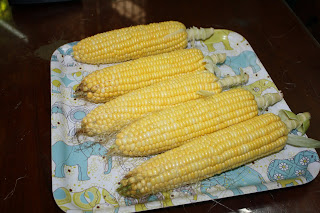How to make bubur jagung

Everytime she makes bubur jagung for her family, i would usually get a bowl of it for she knows that I love....really love the bubur jagung that she makes. But what if the day I want to eat it and she's not making any?. I can't just wait for her to make it everytime so I finaly decided that it's time for me to learn how to make the bubur jagung myself, and she's kind enough to personally come to my house ( like the programme 'take home chef ' tu )to show me how it is done. first, you need, of course, the jagung, the younger they are, the better, peel the skin off, and grate them.. then, boil about a handful of glutinuous rice aka beras pulut in a big bowl with sufficient water. meanwhile, soak about half a cup of sago with water. please take note that this recipe is all based on 'agak-agak' no exact quantity because they all depend on the size of your corns. mine is about RM1 each and I used 5 jantung of jagungs. So, if you are the 'not so sure type&

